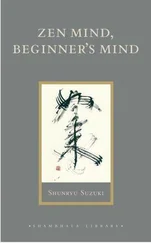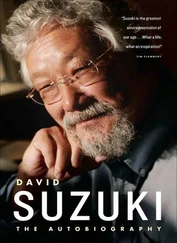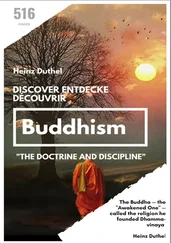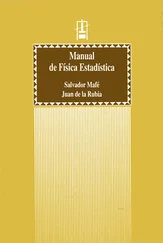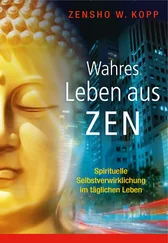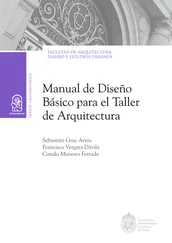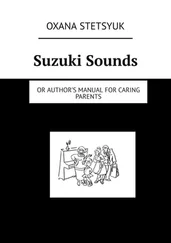Teitaro Suzuki - Manual of Zen Buddhism
Здесь есть возможность читать онлайн «Teitaro Suzuki - Manual of Zen Buddhism» весь текст электронной книги совершенно бесплатно (целиком полную версию без сокращений). В некоторых случаях можно слушать аудио, скачать через торрент в формате fb2 и присутствует краткое содержание. Жанр: Религиоведение, Религия, Руководства, на английском языке. Описание произведения, (предисловие) а так же отзывы посетителей доступны на портале библиотеки ЛибКат.
- Название:Manual of Zen Buddhism
- Автор:
- Жанр:
- Год:неизвестен
- ISBN:нет данных
- Рейтинг книги:3 / 5. Голосов: 1
-
Избранное:Добавить в избранное
- Отзывы:
-
Ваша оценка:
- 60
- 1
- 2
- 3
- 4
- 5
Manual of Zen Buddhism: краткое содержание, описание и аннотация
Предлагаем к чтению аннотацию, описание, краткое содержание или предисловие (зависит от того, что написал сам автор книги «Manual of Zen Buddhism»). Если вы не нашли необходимую информацию о книге — напишите в комментариях, мы постараемся отыскать её.
Manual of Zen Buddhism — читать онлайн бесплатно полную книгу (весь текст) целиком
Ниже представлен текст книги, разбитый по страницам. Система сохранения места последней прочитанной страницы, позволяет с удобством читать онлайн бесплатно книгу «Manual of Zen Buddhism», без необходимости каждый раз заново искать на чём Вы остановились. Поставьте закладку, и сможете в любой момент перейти на страницу, на которой закончили чтение.
Интервал:
Закладка:
V. SOME OF THE HISTORICAL FIGURES
Besides these mythical personages the Zen monastery gives shelter to some other historical characters deeply connected not only with Zen but with Buddhism as a whole. Bodhidharma as founder of Zen Buddhism naturally occupies a chief seat of honour beside the Buddha Sakyamuni. With Japanese Zen followers, however, the founder of a given temple is more highly honoured, and in each of the principal Zen institutions in Japan there is a special hall dedicated to the founder of that particular monastery, where an oil-lamp is kept burning all day and night. Bodhidharma is a unique figure and may be identified wherever he is. He is one of the favourite subjects for the Zen masters to try their amateurish brush. Kwannon is perhaps another such subject.
Fudaishi (Fu Ta-shih), also known as Zenne Daishi (Shan-hui), 493–564, was a contemporary of Bodhidharma. Although he does not belong to the orthodox lineage of Zen transmission, his life and sermons as recorded in the Transmission of the Lamp ( Ch'uan-teng Lu ) [1]are full of Zen flavour, so to speak. His famous gatha is well known to all Zen students. [2]Tradition makes him the inventor of what is known as Rinzo ( luntsang ), which is a system of revolving shelves for keeping the Chinese Tripitaka. For this reason he, together with his two sons, is set up in the Buddhist library as a kind of god of literature.
The Zen monastery harbours many old eccentric characters of whom the most noted of a Chinese origin are Kanzan (Han-shan) and Jittoku (Shih-te). [3]They are vagabond poet-ascetics. Another belonging to this group of characters is Hotei (Pu-tai). [4]That Hotei plays quite a different rôle in Japanese Buddhism from what he does in Chinese, I have explained in my article in the Eastern Buddhist , VI, 4, “Impressions of Chinese Buddhism”.
Shotoku Taishi (574–622) was really one of the most remarkable figures in the cultural history of Japan, and it is no wonder that the Japanese Buddhists pay special monastery buildings. One of the legendary stories circulating in Japan with regard to Bodhidharma is that he came to Japan after he had finished his work in China and was found in the form of a miserable beggar at Kataoka Yama, near Nara. Shotoku Taishi met him there and it is said that they exchanged poems.
These vows are recited after every service.
For the sake of the second half of this gatha the Buddha is said to have been willing to sacrifice his own life. For this reason this is also known as the “gatha of sacrifice”.
Yemmei means “Prolonging life”; when one daily recites this short document in ten clauses relating to Kwannon, one's health is assured for doing good not only for oneself but for the whole world.
1. It is difficult to tell how this dharani came to be inserted here. As most dharanis are, it is devoid of sense from the human point of view; but it may not be necessarily so to the hungry ghosts, for whom the prayer is offered.
Can this be restored to the original Sanskrit as follows?
Namah sarva-tathagatavalokite! Om!
Sambala, sambala! Hum!
Namah surupaya tathagataya!
Tadyatha,
Om, suru[paya], surupaya, surupaya, suru[paya], svaha!
Namah samantabuddhanam, vam!
“Be adored! O all the Tathagatas who are regarded [as our protectors]; Om! Provision, provision! Hum! Adored be the Tathagata Beautifully Formed! Namely: Om! To the Beautifully-formed One! To the Beautifully formed One! To the Beautifully-formed One! Hail! Adored be all the Buddhas! Vam!”
2. “Jewel-excelled” ( ratnaketu ).
3. “Abundant-in-jewel” ( prabhutaratna ).
4. “Fine-form-body” ( surupakaya ).
5. “Broad-wide-body” ( vipulakaya ).
6. “Freed-from-fear” ( abhayankara ).
7. “Nectar-king” ( amritaraja ).
8. “Amida” ( amitabha ).]
9. Namo amitabhaya tathagataya! Tadyatha, amritodbhave, amrita-siddhambhave, amrita-vikrante, amrita-vikranta-gamine, gaganakirtikare! Svaha!
“Adored be the Tathagata of Infinite Light! Namely: O Nectar-raising one! O Nectar-perfecting one! [O Nectar-] producing one! O One who makes nectar pervade! O One who makes nectar universally pervade! O One who makes nectar known as widely as space! Hail!”
This is read, as can be inferred from the text, after the recitation of the Surangama dharani.
It is customary in the Zen monastery to recite the Kwannongo while striking the big bell, which is done three times a day. The present gatha is recited when the striking is finished. As will be seen below, from Kwannon issues a sound which is heard by those who sincerely believe in his power of releasing them from every form of disaster. Each sound emitted by the bell is the voice of Kwannon calling on us to purify our sense of hearing, whereby a spiritual experience called “interfusion” will finally take place in us. See under the Ryogonkyo and the Kwannongyo below.
1. There are two texts with the title of The Hridaya: the one is known as the Shorter and the other the Larger. The one printed above is the shorter sutra in general use in Japan and China.
The opening passage in the larger text in Sanskrit and Tibetan, which is missing in the shorter one, is as follows: [The Tibetan has this additional passage: “Adoration to the Prajnaparamita, which is beyond words, thought, and praise, whose self-nature is, like unto space, neither created nor destroyed, which is a state of wisdom and morality evident to our inner consciousness, and which is the mother of all Excellent Ones of the past, present, and future”.] “Thus I heard. At one time World-honoured One dwelt at Rajagriha, on the Mount of the Vulture, together with a large number of Bhikshus and a large number of Bodhisattvas. At that time the World-honoured One was absorbed in a Samadhi (Meditation) known as Deep Enlightenment. And at the same moment the Great Bodhisattva Aryavalokitesvara was practising himself in the deep Prajnaparamita.”
The concluding passage, which is also missing in the shorter text, runs as follows:
“O Sariputra, thus should the Bodhisattva practise himself in the deep Prajnaparamita. At that moment, the World-honoured One rose from the Samadhi and gave approval to the Great Bodhisattva Aryavalokitesvara, saying: Well done, well done, noble son! so it is! so should the practice of the deep Prajnaparamita be carried on. As it has been preached by you, it is applauded by Tathagatas and Arhats. Thus spoke the World-honoured One with joyful heart. The venerable Sariputra and the Great Bodhisattva Aryavalokitesvara together with the whole assemblage, and the world of Gods, Men, Asuras, and Gandharvas, all praised the speech of the World-honoured One.”
2. From the modern scientific point of view, the conception of Skandha seems to be too vague and indefinite. But we must remember that the Buddhist principle of analysis is not derived from mere scientific interest; it aims at saving us from the idea of an ultimate individual reality which is imagined to exist as such for all the time to come. For when this idea is adhered to as final, the error of attachment is committed, and it is this attachment that forever enslaves us to the tyranny of external things. The five Skandhas (“aggregates” or “elements”) are form ( rupam ), sensation or sense-perception ( vedana ), thought ( samjna ), confection or conformation ( samskara ), and consciousness ( vijnana ). The first Skandha is the material world or the materiality of things, while the remaining four Skandhas belong to the mind. Vedana is what we get through our senses; samjna corresponds to thought in its broadest sense, or that which mind elaborates; samskara is a very difficult term and there is no exact English equivalent; it means something that gives form, formative principle; vijnana is consciousness or mentation. There are six forms of mentation, distinguishable as seeing, hearing, smelling, tasting, touching, and thinking.
Читать дальшеИнтервал:
Закладка:
Похожие книги на «Manual of Zen Buddhism»
Представляем Вашему вниманию похожие книги на «Manual of Zen Buddhism» списком для выбора. Мы отобрали схожую по названию и смыслу литературу в надежде предоставить читателям больше вариантов отыскать новые, интересные, ещё непрочитанные произведения.
Обсуждение, отзывы о книге «Manual of Zen Buddhism» и просто собственные мнения читателей. Оставьте ваши комментарии, напишите, что Вы думаете о произведении, его смысле или главных героях. Укажите что конкретно понравилось, а что нет, и почему Вы так считаете.

